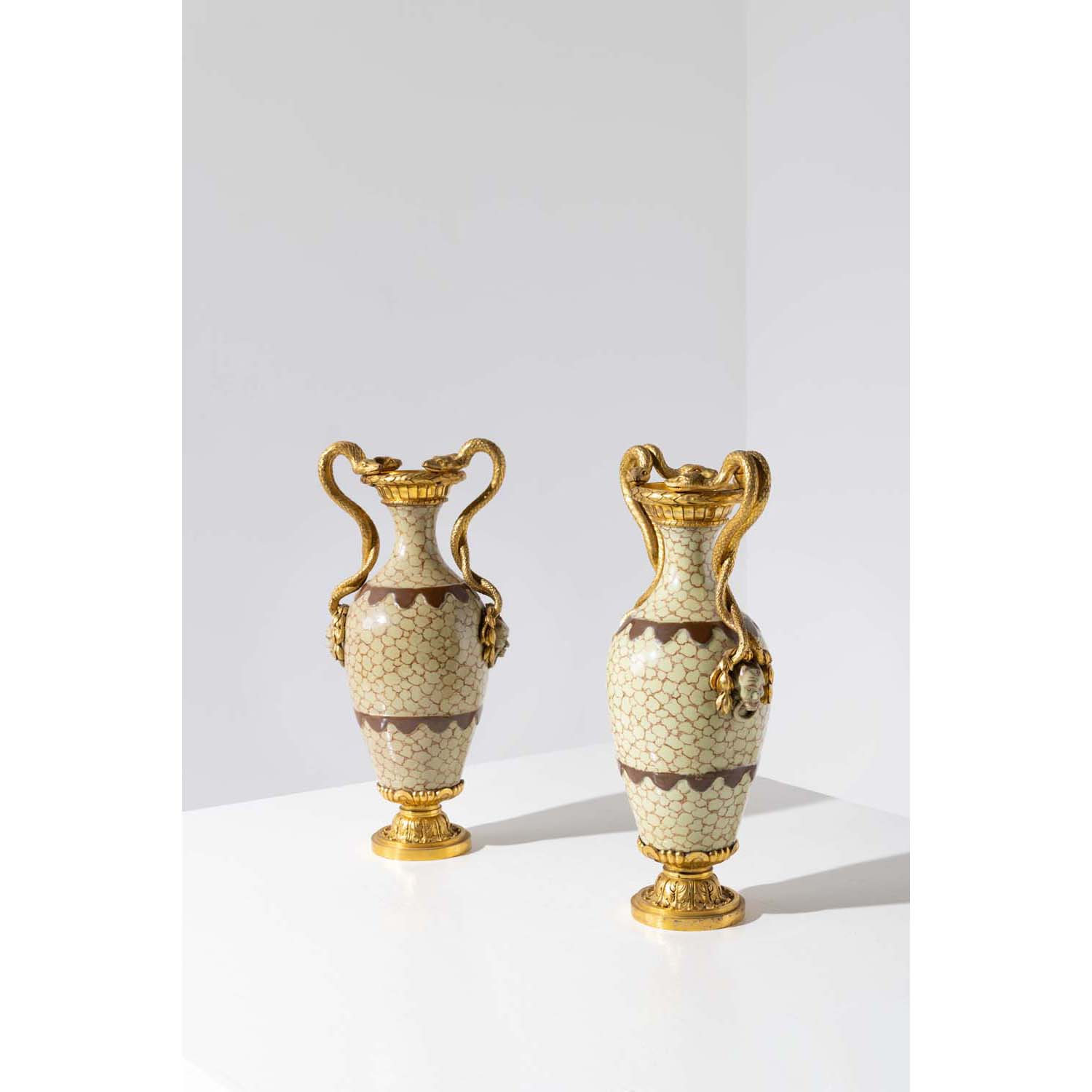PIASA will present a very beautiful pair of porcelain vases at auction during its sale A timless Elegance: From a Private Collection on October 2, 2024.
These two vases are part of a small series of objects that are perfectly catalogued and created from similar vases in terms of shape and painted decoration, but with mounts of different designs.
Regarding the vases themselves, while experts have not reached a precise identification, it seems they may be Chinese porcelain vases decorated at a French manufactory or by a French painter, possibly at Mennecy or Chantilly.
In this scenario, the origin of this series would be a group of vases acquired by a marchand-mercier (or a porcelain factory), later decorated by a French painter (possibly within the framework of a manufactory), then mounted in gilt bronze, likely by various bronze artisans but possibly coordinated by a single individual.
Most of the mounts for these vases (and probably their painted decoration as well) align with the early neoclassical style, around 1760-1770. At least eleven similar vases are adorned with mounts featuring vertical handles forming a right angle at the top, joining the vase with a play of drapery: one pair held at the Nissim de Camondo Museum in Paris, another pair at the Condé Museum in Chantilly, a pair auctioned in Paris in 1999 (Sotheby’s on December 11, 1999, lot 102), another pair auctioned in Paris in 2012 (Aguttes Auction, June 11, 2012, lot 156), one vase auctioned in Paris in 2011 (Maigret Auction, December 2, 2011, lot 206), and a pair set to be auctioned in Paris in 2024 (Crait-Muller Auction, June 21, 2024, lot 190).
Pair of porcelain vases with green and brown pebble motif,
Estimate: 30000 / 50000 €
Other comparable vases feature mounts with more original foliage designs, such as those from the Murat sale and the Jules Strauss sale in 1961, but the most rare and ambitious gilt bronze decoration by far is that of the vase from the Lehman sale in 1925 presented here.
The principle of handles intertwined with two serpents for each handle is a motif that would be repeated on numerous mounts from the Louis XVI period. It likely finds its direct origin in the porphyry or basalt vases produced in Rome in the last third of the 18th century. A nearly identical design can be found on a basalt vase carved in Rome around 1760-1770, now housed at the Château de Versailles (formerly part of the Bailli de Breteuil and Lenoir du Breuil collections).
It is interesting to compare these two vases to a description made during the Blondel de Gagny sale in 1776, where the porcelain decoration could be compatible with the Lehmann vases and the mount also features serpents: "725 - Two yellow porcelain vases, with cut-out brown bands, adorned with handles formed by serpents, collars and bases of gilt bronze, each 14 inches high, on African marble pedestals framed with gilt bronze moldings, 292 livres." However, the description does not mention any crackled or pebbled decoration, and the pair of vases is listed under "Chinese porcelain"; nevertheless, the dimensions could correspond if we imagine marble pedestals about 4 cm high.

